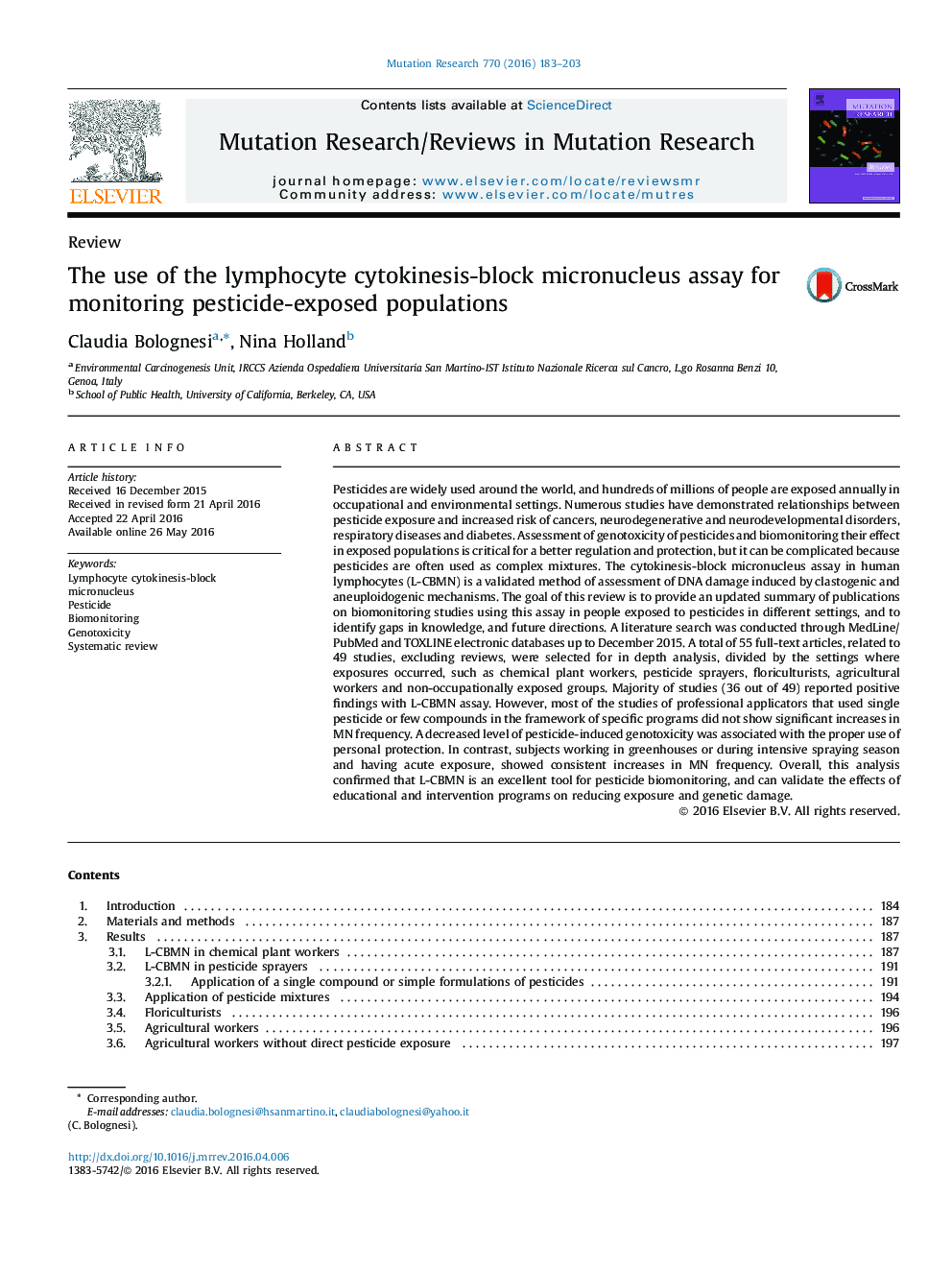| کد مقاله | کد نشریه | سال انتشار | مقاله انگلیسی | نسخه تمام متن |
|---|---|---|---|---|
| 5528947 | 1401669 | 2016 | 21 صفحه PDF | دانلود رایگان |
Pesticides are widely used around the world, and hundreds of millions of people are exposed annually in occupational and environmental settings. Numerous studies have demonstrated relationships between pesticide exposure and increased risk of cancers, neurodegenerative and neurodevelopmental disorders, respiratory diseases and diabetes. Assessment of genotoxicity of pesticides and biomonitoring their effect in exposed populations is critical for a better regulation and protection, but it can be complicated because pesticides are often used as complex mixtures. The cytokinesis-block micronucleus assay in human lymphocytes (L-CBMN) is a validated method of assessment of DNA damage induced by clastogenic and aneuploidogenic mechanisms. The goal of this review is to provide an updated summary of publications on biomonitoring studies using this assay in people exposed to pesticides in different settings, and to identify gaps in knowledge, and future directions. A literature search was conducted through MedLine/PubMed and TOXLINE electronic databases up to December 2015. A total of 55 full-text articles, related to 49 studies, excluding reviews, were selected for in depth analysis, divided by the settings where exposures occurred, such as chemical plant workers, pesticide sprayers, floriculturists, agricultural workers and non-occupationally exposed groups. Majority of studies (36 out of 49) reported positive findings with L-CBMN assay. However, most of the studies of professional applicators that used single pesticide or few compounds in the framework of specific programs did not show significant increases in MN frequency. A decreased level of pesticide-induced genotoxicity was associated with the proper use of personal protection. In contrast, subjects working in greenhouses or during intensive spraying season and having acute exposure, showed consistent increases in MN frequency. Overall, this analysis confirmed that L-CBMN is an excellent tool for pesticide biomonitoring, and can validate the effects of educational and intervention programs on reducing exposure and genetic damage.
Journal: Mutation Research/Reviews in Mutation Research - Volume 770, Part A, OctoberâDecember 2016, Pages 183-203
